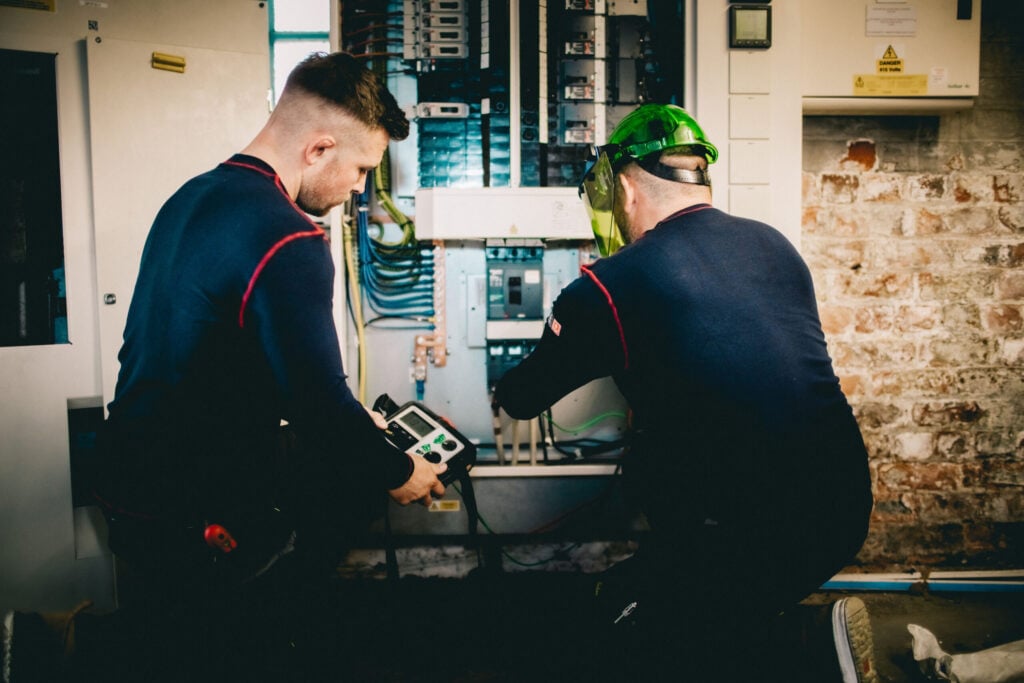Electrical Inspection & Testing
As a Duty Holder, it is imperative that you recognise the important aspects of your job.
The Electricity at Work Regulations 1989 (EAWR) places a legal responsibility on the Duty Holder to ensure that electrical systems, under their control are safe, at all times.

You can rely on us
Considering the ABSOLUTE requirements of the Electricity at Work Regulations 1989, and the many years of experience staff have in delivering periodic Inspection and Testing programmes, Guardian are in a unique position to deliver a bespoke service to suit your environment in order to satisfy the regulations.
Electrical Network Drawings
Undertake electrical network drawings to identify and label the detail of your LV system in order to comply with Regulation 12 (ABSOLUTE) of the Electricity at Work Regulations 1989 (methods of identifying circuits).
Corrective action on electrical non-compliances
Taking an industrial environment, a programme of testing can commence on either a one-year, three-year or five-year depending on your management decision making process or budgetary requirements.
100% Inspection and Testing (ASFARP)
Whilst drawing the electrical network, any dangerous electrical conditions will be highlighted immediately to the Duty Holder for corrective action. This approach will also serve to identify and prioritise areas for testing.
Electronic Records
Paragraph 69 advises that test results should be kept throughout the working life of a system to evidence maintenance. Guardian's unique web based system TraQ-it™ allows results to be uploaded on an ‘anytime’ basis.
Duty Holder responsibilities
Under Regulation 3 (ABSOLUTE) of the Electricity at Work Regulations 1989, it is the DUTY of every employee while at work to comply with the provisions of the regulations in so far as they relate to matters which are within their control.
The Electricity at Work Regulations 1989
The Electricity at Work Regulations 1989 do not specifically state that inspection and testing have to be undertaken. However, Regulations 4(1) and 4(2) do state that an electrical installation should be designed, installed, operated and maintained in a safe manner at all times. In other words, your electrical installation has to remain safe from the drawing board to de-commissioning, and you have to evidence this! Paragraph 69 of 4(1) and 4(2) state:
“Records of maintenance, including test results, preferably kept throughout the working life of an electrical system will enable the condition of equipment and the effectiveness of maintenance policies to be monitored.
"Without effective monitoring, Duty Holders cannot be certain that the requirement for maintenance has been complied with.”
More importantly, the following regulations are ABSOLUTE (i.e. they must be met regardless of cost) and compliance with them can only be achieved by Inspection and Testing programmes or documented routine maintenance:
Regulation | Status | Evidence | Defence |
Regulation 5 | ABSOLUTE | Documented Testing – PFC Test | Regulation 29 Applies |
Regulation 8 | ABSOLUTE | Documented Inspection and Testing – EFLI and Continuity Test | Regulation 29 Applies |
Regulation 9 | ABSOLUTE | Documented Inspection and Testing – EFLI and Continuity Test | Regulation 29 Applies |
Regulation 10 | ABSOLUTE | Documented Inspection | Regulation 29 Applies |
Regulation 11 | ABSOLUTE | Documented Inspection and Testing – RCD Test | Regulation 29 Applies |
Regulation 12 | ABSOLUTE | Documented Inspection Schematic Drawings and Labelling System | Regulation 29 Applies |
